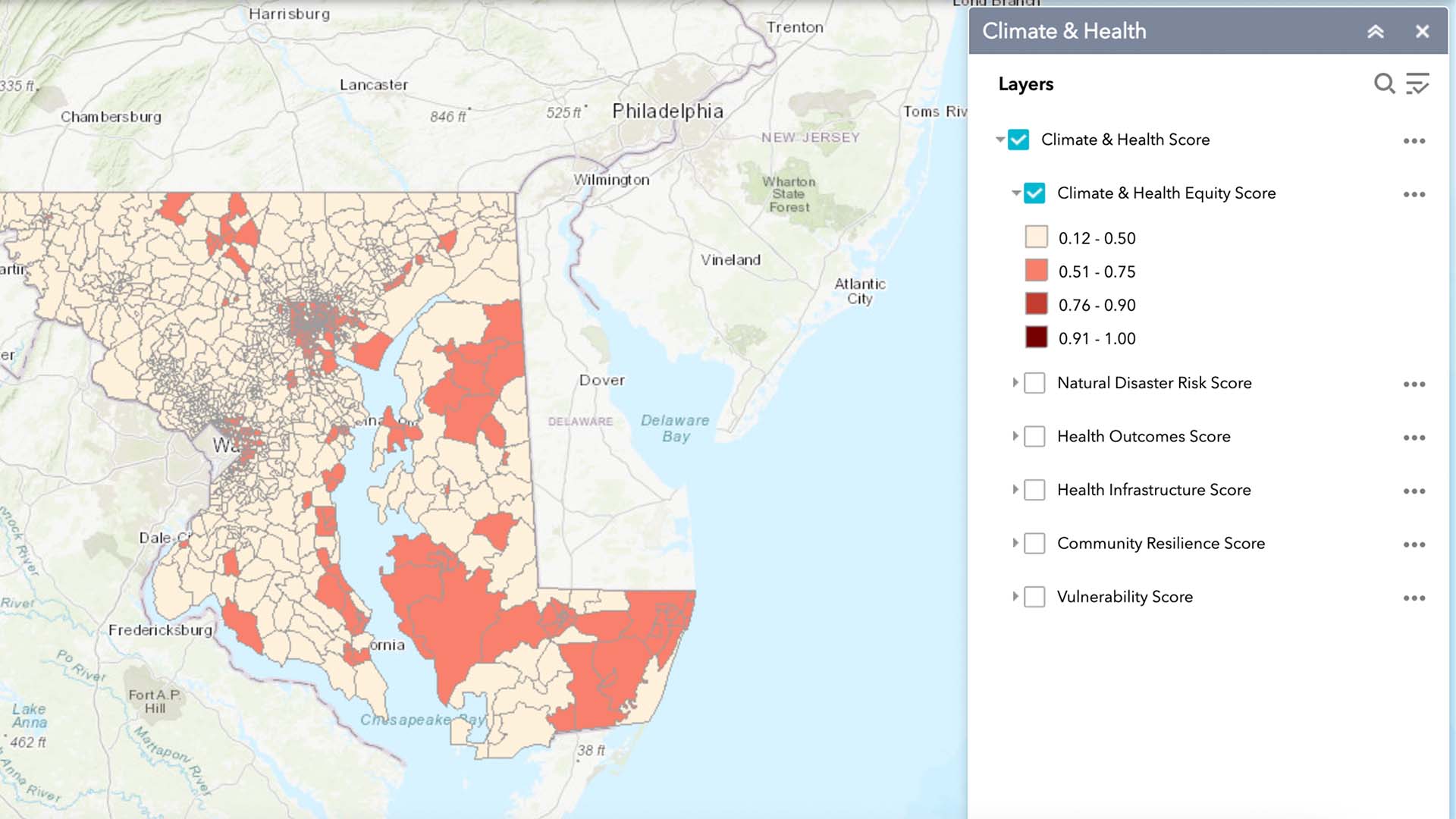The Rebuild Maryland Coalition is a growing group of 350 + organizations and individuals representing Faith Communities, Civil Rights organizations, Non-Profits, Labor Unions, Businesses, Educational Groups, and Environmental Groups. This diverse group of stakeholders formed in 2020 to establish practical solutions for reducing harmful air pollutants such as greenhouse gas emissions; hold polluters responsible for the damage they have caused; and put frontline communities first while protecting the health, economic well–being, and natural treasures of Maryland. Since the coalition’s formation, we have developed guiding principles that inform the Climate Crisis and Environmental Justice Act (CCEJ) and all the legislation we support.
Visit the Rebuild Maryland Coalition website to learn more about the Climate Crisis and Environmental Justice Act (CCEJ)
Funding Infrastructure with the CCEJ Act
With the passage of the Federal Infrastructure Plan this year, a fee charging polluters which existed 25 years ago was put back into place so that one billion dollars a year can now be used to clean up Superfund sites. In Maryland, the Climate Crisis and Environmental Justice infrastructure fund, created from an incrementally rising fee on greenhouse-gas emissions caused by the burning of fossil fuels and or methane leakage from natural gas, will also support communities affected severely by pollution. The law would provide Maryland an opportunity to create a level playing field for its citizens to live in a healthy and safe environment.
With revenue distributed to the Benefit Fund and the Infrastructure Fund, the destination of direct funds for low and moderate-income families are fixed. Focusing on the Rebuild Maryland Coalition’s first principle of Putting people first, the bill makes sure that the most vulnerable populations are protected while also protecting the middle-class.
The Infrastructure Fund focuses on local needs, but also has the flexibility for jurisdictions to collaborate, and for citizens to have a voice in the process. If the CCEJ passed, the Commission on Environmental Justice and Sustainable Communities would establish criteria for the eligibility of environmental justice populations for Infrastructure Fund revenue. But it must use, at a minimum, annual household income, minority status, and environmental burden as criteria, and solicit input from the public.
Tools for Identifying Environmental Justice Communities in Maryland
The Rebuild Maryland Coalition’s second principle is: Equality issues must be front and center of the discussion and the decision-making process. Here in Maryland, we are fortunate to have the MD Climate and Health Equity Mapper and the Maryland EJScreen Mapper to help us identify the most vulnerable communities.
In 2017, the University of Maryland EJScreen Mapper was created in collaboration with the Maryland School of Public Health, the Town Creek Foundation via the Maryland Commission on Climate Change and the Center for Smart Growth with MD Environmental Health Network to map environmental hazards primarily in urban areas. This year, Dr. Sacoby Wilson’s Community Engagement Environmental Justice and Health (CEEJH) group will lead the expansion of the MD EJ SCREEN with an EPA contract and private funding that will enable the CEEJH team to expand the EJ tool’s capabilities to quantify, and respond to, the issues that affect children and rural communities. These include agricultural hazard indicators (e.g., pesticide exposures), children’s health indicators (including blood lead levels and maternal/infant mortality), rural environmental effects (such as proximity to concentrated animal feeding operations, aka “CAFOs”, and other polluters) and rural socioeconomic factors (such as the percentage of the population receiving social service benefits). This is an unprecedented opportunity for more legislative action and effective implementation.
The UMD Map shows data by District with darker colors indicating the highest burden of pollution. In Districts: 46, (Represented by State Senator: Bill Ferguson, State Delegates: Luke Clippinger, Robbyn Lewis, Brooke E. Lierman ), 40 (Represented by State Senator: Antonio Hayes State Delegates: Marlon Amprey, Frank M. Conaway, Jr., and Melissa Wells) and 44A, (Represented by State Senator: Charles E. Sydnor, III State Delegate: Roxane Prettyman), 92% of the population meet the Respiratory Hazard Index. In District 44A, 90% of the population are on the NATA for Air Toxics Cancer Risks. There is a very small population of people in these Districts that escape these hazards.
The MD Climate and Health Equity Mapper is described as combining demographic and environmental health data from a variety of sources, and maps that data onto Maryland census block groups in order to identify disparities in public climate and health equity. This application allows users to evaluate these factors in their community and see how it compares to the rest of Maryland. Currently there are eight categories of data:. Climate & Health Equity Scores, Natural Disaster Risk, Health Infrastructure, Health Outcomes, Vulnerability, Community Resilience, Climate and Health Context Layers.
These tools can help constituents advocate and create projects and plans to remediate these problems. The CCEJ’s Climate Crisis Council can use them to identify the needs of the State as they make the plans for the Act’s revenue distribution. I encourage all Marylanders to follow the development of these maps; find your neighborhood and gather the data needed for you and your neighbors to show your State Representatives how they need to act. Get them involved in advocating for you and the whole State’s health.









